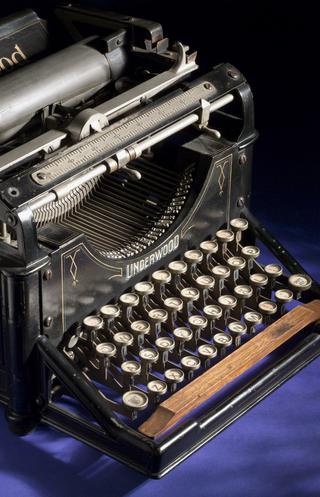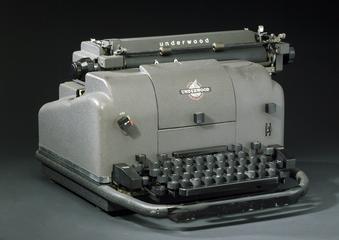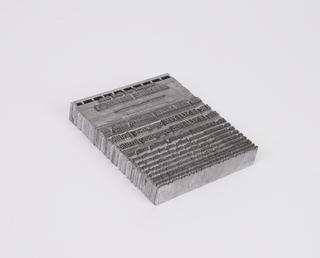
Section of 102 duplicates from a complete fount of logotypes at the British Museum, in wooden tray, 1899
These are a selection of duplicates from a complete fount of this arrangement of type preserved at the British Museum. These types differ from those ordinarily used in that the fount comprises a large number of complete words in addition to individual letters.
The system was patented by Henry Johnson in 1778-80 and John Walter was so impressed with its merit that he purchased the patent rights. After reducing the symbols to 1,500, he adopted the system in 1784 at his "Logographic Office" in Printing House Square and in 1785 in this way published the "Daily Universal Register," which in 1788 became the Times newspaper.
The objections to logotypes were: the great size of the compositor's case, the difficulty in casting, and the delay experienced in "justifying" a line ending in a logotype. To overcome the latter objection, Matthew Beniowski in 1846 introduced a system of logotypes in which the single types were bound together by varnished tinfoil.
These systems have both disappeared, but in modern founts such combination as ff, ffi, ffl, known as ligatures, are still cast together, for the reason that if separate they would occupy so much space as to appear unsightly.
Details
- Category:
- Printing & Writing
- Object Number:
- 1899-15
- Materials:
- oak (wood) and type metal (lead, antimony, tin alloy)
- Measurements:
-
overall: 25 mm x 150 mm x 150 mm, 1.155kg
- type:
- typecasting equpiment
- credit:
- British Museum Trustees




